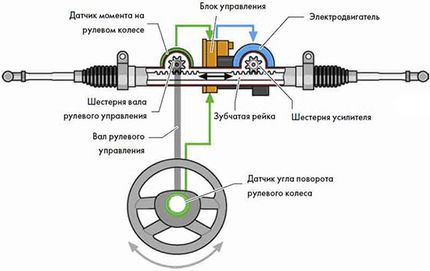
Symptoms of a Faulty or Faulty Steering Column Actuator
Content
Common signs include difficulty starting the car, being able to remove the key from the ignition at any time, and the ignition switch overheating.
Prior to the addition of electronic ignition controls to modern cars, the steering column actuator was the main component that ensured that your key stayed inside the ignition and didn't fall out. For people who own pre-2007 vehicles, this component can be problematic; breaks down when you least expect or can afford it. There are a few symptoms that you can recognize that will give you some early indications that a steering gear problem is developing, so you can replace the steering gear before it causes serious problems.
How does the steering column drive work?
It is important to understand what this part does so that you can recognize the warning signs that we will document below. Every time you put the key in the ignition, there are several mechanical levers (or toggle switches) inside the steering column that work together to turn the ignition on. One of these parts is a metal rod and link that provides an electrical signal to the engine starter and securely holds the key in the ignition. This is the steering column drive.
The following are some warning signs and symptoms that may indicate a problem with the steering column drive.
1. Difficult to start the car
When you turn the ignition key, it draws power from the battery and sends a signal to the starter to activate the process. However, if you turn the key and nothing happens, this is a clear sign that there is a problem with the steering column drive. If you try to turn the key and the starter engages multiple times, this is also a sign that the actuator is starting to wear out and needs to be replaced.
2. The key can be removed from the ignition at any time.
As we stated above, the power steering is the locking mechanism that holds your key firmly while it is in the ignition. Under no circumstances should your key move. If you manage to remove the key from the ignition when the key is in the "start" or "accessory" position, this means that the steering column actuator is faulty.
In this case, you should immediately refrain from driving and have your local ASE certified mechanic replace the steering column actuator and check other steering column components to make sure nothing else is broken.
3. No resistance on the key
When you insert the key into the ignition and push the key forward, you should feel some resistance to the key; especially when you are in "starter mode". If you can immediately go into "starter mode" without feeling resistance; this is a good indicator that there is a problem with the steering column drive.
If you notice these warning signs, be sure to contact your local ASE certified mechanic so you can have it inspected, diagnosed and repaired. If the steering column drive fails, driving will become unsafe.
4. Overheating of the ignition switch
A faulty ignition switch or a broken steering column actuator will also generate heat due to electrical overheating. If you notice that your key and ignition are warm to the touch, this is also a potentially dangerous situation that should be inspected by a professional mechanic.
5. Pay attention to the backlight of the dashboard.
Natural wear and tear will eventually lead to failure of the steering column drive. When this happens, it can happen without warning signs, as we have listed above. However, since this item is connected to the electrical system on your dashboard, you will know if it is working if some lights on the dashboard come on when you turn the ignition key. On many older vehicles, the brake light, oil pressure light, or battery light comes on as soon as you turn the key. If you turn the ignition on and these lights don't come on, that's a good sign that the switch is worn or may be broken.
Any time you find any of the above warning signs of a bad or faulty steering column drive, don't hesitate or procrastinate; contact your local ASE certified mechanic to have this problem checked and corrected before driving the vehicle.
